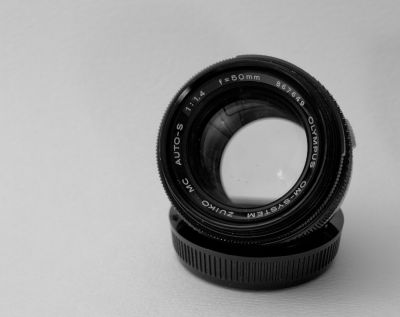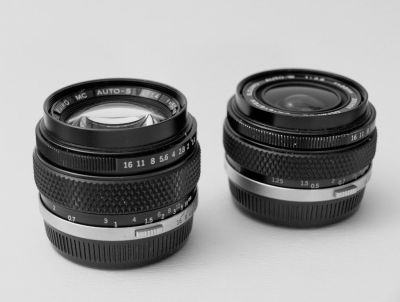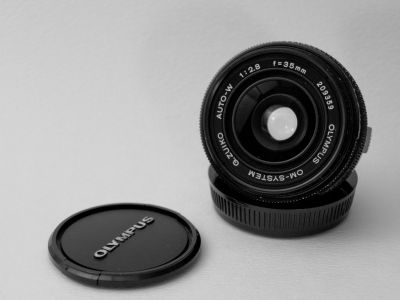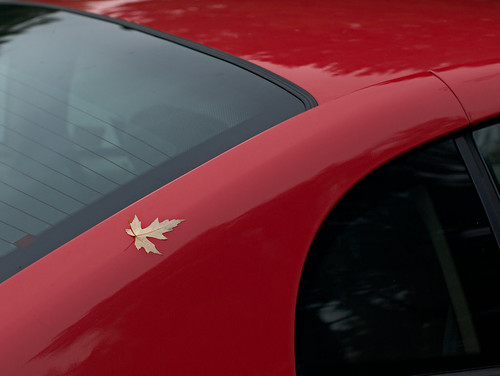Olympus OM Lenses on Four Thirds Cameras
Contents
The question comes up a lot in the forums: can you use OM system 'legacy' lenses on the 4/3 system cameras? Must I purchase the expensive Olympus MF-1 adapter? Also, is it true that Olympus does not recommend using OM system lenses on 4/3 system cameras?
I use OM lenses on my 4/3 camera all the time. I bought an inexpensive adapter, made in China, from cowy07 on ebay. The adapter is constructed of solid brass and is well constructed. It is very heavy. If you prefer a lightweight one, try Fotodiox, etc. You can get AF confirm adapters. The results may vary with different AF confirm adapters.
The MF-1 is nicely constructed and quality, but I feel it is too much to pay for an adapter that gives no different results from an inexpensive one. After all, it is just a hunk of finely machined metal. Most adapters will allow the lens to focus past infinity. This is to ensure that you can focus to infinity, given the slight variations in adapters and lenses. In practice, it means for a given lens, you may have to focus to infitity and then back up a little bit to bring distant objects (infinity) back into focus. I do not find this objectionable with my lenses.
Olympus recommendeds not using most OM lenses because they consider their performance substandard compared to designed for digital lenses. You may experience some exposure variation with lenses under f/2.8 and blooming wide open. You can see some of my OM work in my Flickr album and here on this site.

Using Manual Focus Lenses
Here's what you need to know to get started using legacy OM-system lenses. You will need to focus manually and use stopped down metering.
Exposure Metering
Legacy glass requires using aperture priority. None of the automatic exposure modes on your E-system camera will work with lenses mounted through an adapter. All the other modes require the camera to make aperture adjustments. This is not really a drawback because the lenses work fine with aperture priority and you will likely be wanting to exercise creative control over aperture if you are shooting with old glass.
Using your manual focus lens on the E-System camera requires stopped down metering.
- Set the camera to Aperture Priority mode.
- Open the aperture to its widest opening. (Turn the aperture ring on the lens to set aperture.)
- Turn the focus ring on the lens to focus.
- Close the aperture to the desired opening. (The camera will select the shutter speed for correct exposure.)
- Trip the shutter.
Auto Focus Lenses
Auto focus lenses do not work through an adapter with an E-system camera (with one possible exception). The lack an aperture ring, focus ring and electrical connections compatible with the camera.
Olympus released a small number of auto focus lenses for the poorly received OM707 camera. These will not work with your E-System camera and more importantly, will not work with an OM to Fourth Thirds adapter. No film-era auto focus lens I know of will operate on an E-system camera. An aperture ring is required, which most of these lenses will not have. Lenses made for the OM707 (known in the United States as the OM-77AF) (and OM101) (known in the United States as the OM-88, a power assist manual focus version) will not work through any current OM to Four Thirds adapter. These lenses lack both focus and aperture rings.
The one exception is a very rare OM Zuiko 35-70mm zoom autofocus lens. This came out in the late 1970s or early 1980s and was an early autofocus system. The lens was cradled in a bulky self-contained autofocus system. Being a standard OM mount lens, it could be mounted to any OM body (I remember seeing previews as the lens was announced with some fanfare). I found a picture of the OM Zuiko 35-70mm f/4 Autofocus lens on Flickr. The comments clear up the issue of which OM bodies the lens will operate on.
On the OM-30, autofocus operates with a touch of the camera shutter release, but on the other cameras the focus must be operated by buttons on the lens. Apparently Olympus is trying to hide its existence, since I could not find it in the history on their website. It is really a neat lens, even if not a very practical idea, and was pretty astonishing technology in its day. A discussion about the auto focus lenses. And the OM-System on Wikipedia I assume the lens will function through an adapter, just as it would on the other OM-system bodies.
This is a lot of obscure ground to cover, but at least it will point you away from unsuitable lenses you may find lurking on ebay or in your aunt's attic. Unless you like playing with bulky antique auto focus lenses from the dark ages!
Image Stabilization
Manual focus lenses are image stabilized when mounted to an Olympus body offering in-body image stabilization. You are required to set the focal length of the lens manually. On the current line of cameras, the setting is easily and quickly made through the "control panel" on the rear LCD. Currently, the E-510 / E-520 / E-3 / E-30 camera bodies all support image stabilization for manual focus lenses. You must have current firmware and may need to upgrade your firmware if you have an older E-510. The focal length must be set because the lenses cannot communicate focal length to the camera.
Image stabilization is very effective on legacy glass. It turns any manual focus telephoto lens from the film era, such as the OM 200mm f/4, the Rokkor 200mm f/4.5 or any number of other lenses from, Nikon, Zeiss, Leica, etc. into an inexpensive (well, maybe not the Leica) alternative to stabilized lenses.
Note: You do not have to set the focal length for Zuiko Digital lenses. Although the focal length is grayed out, you can still adjust it with a ZD lens attached, which can be confusing.
Using the Adapter
There is a debate over whether to attach the adapter to the camera or the lens first. I usually attach the adapter to the lens first, since it is easier to mount the lens and adapter combination to the camera than mount the adapter alone. The lens gives your fingers a better grip and leverage to lock the lens in place.
Because OM-system lenses have the mount release button on the lens, the adapter can be left on the camera and lenses changed the same as on an OM-system camera. When I take several OM lenses out to shoot, I will leave the adapter on the camera, dismount one lens and mount the other. It is easy, for example, to release the 50mm, put it into the bag and mount the 35mm without dismounting the adapter.
The most convenient approach if you have several lenses is to purchase an adapter for each lens, but that can get expensive. With OM lenses, because of the built-in release button, a mount for each lens is not as important, unless you are frequently swapping Four Thirds mount lenses with OM-system adapted lenses.
Why use manual focus lenses?
Why do photographers use manual focus lenses when autofocus lenses are available? Creativity. They like to differentiate their work from others, explore new ways of making images, choose lenses with unique characteristics imparting special qualities to images. Nostalgia also plays a role for those who got their start in the film era, and curiosity for those who didn't. Sometimes they want a faster lens than is available with their kit zooms or is affordable. They may, like many bird photographers on a budget, find a faster and longer telephoto lens from the film era can be an inexpensive alternative. Some have 135 format digital cameras and a manual focus lens from the film era may produce better quality images than existing lenses. Olympus lenses are popular with Canon 135 format photographers for that reason. Have fun!
I bought a 4/3 to OM mount adapter soon after getting my E-510. I used a manual single lens reflex film camera for many years, but never could afford one of the faster lenses. It seemed a bit crazy to me that after spending nearly a thousand dollars for two sophisticated designed for digital ZD lenses that I was limited to a slow f/3.5 to 5.6 lens. I had used a 50mm f/2.2 Fujinon for years along with a 135mm f/2.8 third-party lens and both were faster than the kit zooms. I was used to the ability to isolate subjects from the background with a fast (well, relatively fast) lens on 35mm. It was just too tempting to give the faster standard lenses a try.
Example Photographs
This shot of the leaf on the rear quarter panel of a Mustang was focused manually using the viewfinder. It required a good amount of time to decide the focus was good. The image turned out to be close to critically focused, although not as good as with Live View. Distance to subject was about a meter.
The antique roses were manually focused using the viewfinder. The only part I could see clearly enough to focus critically was the lower front flower, which as you can see is sharpest. I hoped depth of field would include the two accompanying flowers, but they are slightly soft. Subject distance half a meter. Live View would have resulted in perfect focus, but I did not have a tripod.
The 50mm f/1.4 requires some exposure compensation due to metering issues mounted to the E-system bodies (they were designed for f/2.0 or slower lenses). A series of shots demonstrating both depth of field and exposure variation are available in my picasa album. The lens blooms slightly wide open, resulting in a soft and slightly overexposed image. It is not always noticeable depending on lighting and subject and other factors, but it can make it difficult to know if the lens in focus wide open. Because of the shallow depth of field, the f/1.4 can be a challenge to focus on the 510 unless you have good eyes and practice a lot. The f/1.8 is arguably sharper, suffers less from exposure variation and can be had for a song. I have one of each since they are not expensive and I like shallow depth of field.
At close focus and wide open, the f/1.4 may be nearly impossible to focus without live view, say when photographing an insect (dof 1cm). Manual focus in Live View while shooting hand held is challenging. The image tends to shake a lot when using 7x or 10x magnification. One technique I developed, is to not worry about the image being steady. Just keep focusing until you see an edge on the object sharpen up, even if it only passes through the field of view momentarily. It's not perfect, but can be better than using a small viewfinder without focusing aids. Even then, with 1cm dof, just handling the camera can move the subject out of the focus plane.

The 50mm f/1.4 next to the diminutive 35mm lens. Note the interestingly shaped lens behind the front element.

The 35mm is prone to flare. Use a good lens hood.
Autumn flowers shot at f/2.8 (wide open). Very close to subject. Gives an idea of the depth of field available with 4/3.
Example of how the bokeh behaves with long thin forms like pine needles.
Other Sources
- MFLenses - Forum dedicated to manual focus lenses.
- Biofos - E-System information.
- Wrotniak - E-System camera and lens reviews and articles.
- Katz Eye Optics - Focusing screens for DSLRs
Still working on this page, check back for additions.



